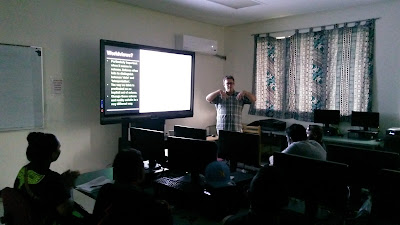Monilophyte and lycophyte presentations

Monilophyte and lycophyte presentations in pictures. Glenn DeShawn and Regina on cyanobacteria Jelory on mosses Lycopodium morphology Francina on lycopodium morphology Fern life cycle Joshua on fern life cycle Fern morphology Brady on fern morphology with Aimina Kosraean Kun Isaac, Junior covers Mwoakillese plant names for ferns Nagsia and Kanoa on Pohnpeian plant pronounciations Heather, Woleaian plant words


